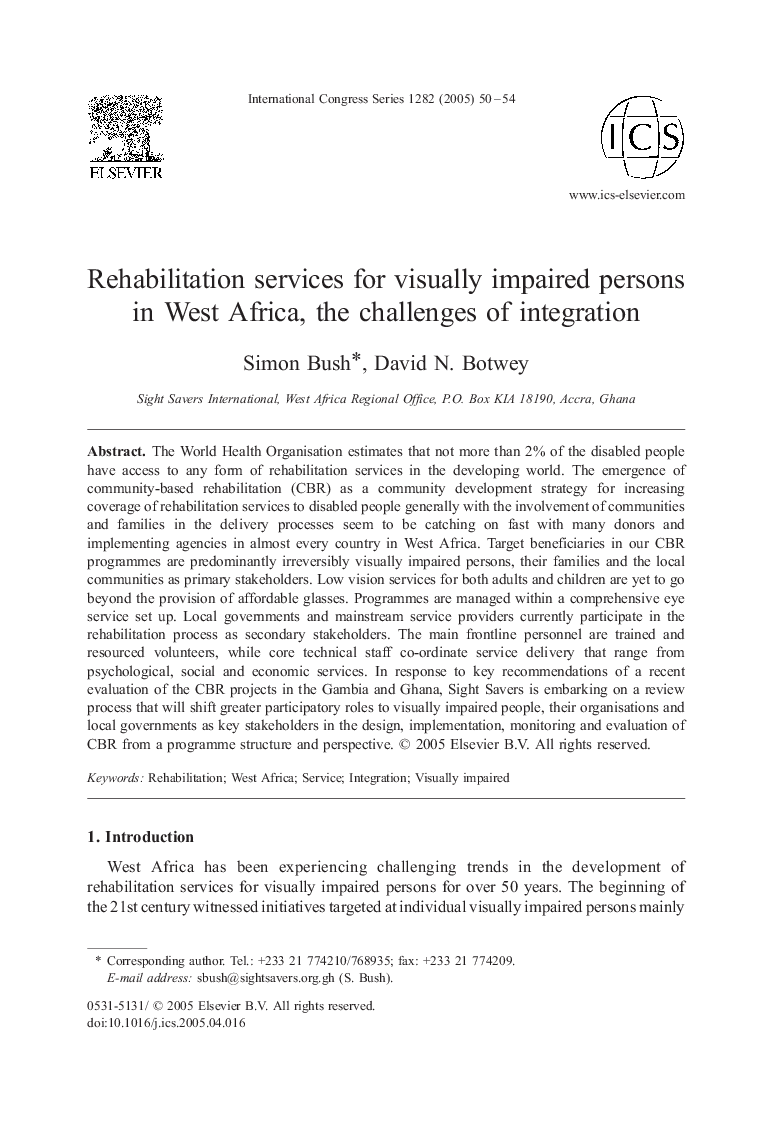| Article ID | Journal | Published Year | Pages | File Type |
|---|---|---|---|---|
| 9021493 | International Congress Series | 2005 | 5 Pages |
Abstract
The World Health Organisation estimates that not more than 2% of the disabled people have access to any form of rehabilitation services in the developing world. The emergence of community-based rehabilitation (CBR) as a community development strategy for increasing coverage of rehabilitation services to disabled people generally with the involvement of communities and families in the delivery processes seem to be catching on fast with many donors and implementing agencies in almost every country in West Africa. Target beneficiaries in our CBR programmes are predominantly irreversibly visually impaired persons, their families and the local communities as primary stakeholders. Low vision services for both adults and children are yet to go beyond the provision of affordable glasses. Programmes are managed within a comprehensive eye service set up. Local governments and mainstream service providers currently participate in the rehabilitation process as secondary stakeholders. The main frontline personnel are trained and resourced volunteers, while core technical staff co-ordinate service delivery that range from psychological, social and economic services. In response to key recommendations of a recent evaluation of the CBR projects in the Gambia and Ghana, Sight Savers is embarking on a review process that will shift greater participatory roles to visually impaired people, their organisations and local governments as key stakeholders in the design, implementation, monitoring and evaluation of CBR from a programme structure and perspective.
Related Topics
Life Sciences
Biochemistry, Genetics and Molecular Biology
Molecular Biology
Authors
Simon Bush, David N. Botwey,
